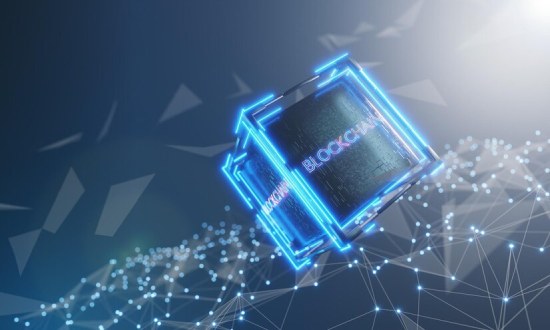-
The market for cryptocurrencies has expanded impressively during the past several years. Crypto traders are reaping significant returns on their investments, and it will continue for some time. The future of cryptocurrency trading is bright, therefore, now is the ideal time to invest in creating a crypto wallet using crypto wallet development services. Now the question is: How to create a user-friendly crypto wallet?
Let's explore the basics of how to develop a crypto wallet, including the features, development process, and more.
How To Create a Crypto Wallet from Scratch
A skilled development team is necessary to create a crypto wallet from scratch without relying on pre-existing libraries. The iterative process teams employ a product discovery phase to reduce product uncertainty and meet the needs of their target audience. It takes place before the production of the app.
The team should have a clear definition of the problem they are tackling and agree with it throughout the product discovery process. This stops team members from squandering time and money by overextending and incorporating pointless features.
Additionally, as part of the product discovery phase, the team plans the software architecture and takes into account factors like:
- The blockchain network and wallet must be in sync for the wallet to properly generate wallet addresses, identify transactions, determine transaction fees, and perform other crucial tasks.
- The steps involved in creating the wallet application and the relevant parts that programmers must incorporate, like the required APIs, coding languages, and payment gateways.
- The wallet features that customers desire to have in their wallet applications, such as portfolio tracking, transaction history, and balance checking.
Also, Explore | The Best Cryptocurrency Wallet List for Secure Storage
Additionally, the development team must include individuals with experience in the creation of software solutions, such as:
Development Essentials
UI/UX Development
Designers of user interfaces and user experiences create the wallet's interface. They design intuitive user interfaces that users may employ to fully utilize the wallet.
Front-End Programming
By integrating the design into the crypto web application, front-end developers can then guarantee the creation of the user interface and optimization of the user experience.
Mobile App Development
If you want to focus on MVP development, mobile developers can create cross-platform solutions like iOS and Android apps for your cryptocurrency wallet. The final choice guarantees a quicker development cycle.
Back-End Development
The creation of server-side operations is the responsibility of back-end developers. The backend manages, stores, secures, and processes the data for efficient operation, making it a crucial component of program development.
Quality control
To verify that all the features of the wallet application operate without faults or problems, (QA) engineers test it. Before the launch of the product, they are in charge of designing and executing tests to find any potential problems with the wallet application.
Also, Check | Increasing Inevitability of Multi-Chain Crypto Wallet Development
Technology Stack
Depending on the preferred platforms, the development team will need to select programming languages appropriate for the crypto wallet application. Developers can utilize the following examples of programming languages and SDKs to create wallet applications:
TypeScript
Since many developers are already familiar with JavaScript, this open-source programming language does not have an exceptionally high entry barrier. Developers can create scalable progressive web applications using TypeScript.
Python or Kotlin
Java or Kotlin are two options for developers thinking about publishing the wallet application on Android. Due to its ease of use, Java is a particularly popular language for creating Android applications. On the other hand, Google prefers Kotlin, a more recent programming language, for the creation of Android applications. In addition to being totally compatible with Java, Kotlin is also simpler to learn.
Objective-C or Swift
Swift or Objective-C are two options for developers looking to create iOS applications. Though it is closed-source, Objective-C is a well-known programming language. Swift, on the other hand, is a more recent open-source language developed by Apple allowing programmers to create applications for its platforms. Additionally, Swift is simpler to read and learn than Objective-C.
Flutter
Dart, a versatile programming language that developers may use to create programs that operate on most platforms without restrictions, is the foundation of this Google SDK. Due to its simultaneous support for six different platforms, the Flutter SDK is ideal for teams looking to publish cross-platform wallet applications. Android, iOS, macOS, Windows, Linux, and the web are the six platforms.
Must-Read | Top Features for Modern Crypto Wallet Development
Development Stages
Every type of program that you create goes through several elopement stages. The stages of development you will experience when designing an app are as follows:
- Planning
- Budgeting
- Development of UI/UX
- Coding
- App evaluation
- Post-release assistance and deployment
Also, Visit | Shifting Towards Web3 Crypto Wallet Development
Benefits of Creating a Crypto Wallet
Control over Funds by Users
Non-Custodials are gaining enormous traction mostly because they give users direct access to their money. Users do not need to rely on a third party to handle their funds or carry out any connected tasks.
Security in Investing
The risk of a data breach is substantially smaller because you are responsible for managing all the information related to your online cryptocurrency wallet and its funds. This is one of the main causes for why 66.5% of cryptocurrency owners now use non-custodial and mobile storage options.
Quick Withdrawals
These wallets don't require authorization from a third party for each transaction, in contrast to top Custodial wallets. This simplifies everything and makes it simpler to take advantage of fast withdrawals.
Now that this has been addressed, let's look at the limitations of non-custodial cryptocurrency wallets to arrive at a fair conclusion.
There aren't any significant negatives of Non-Custodial wallets that should be emphasized. The best Blockchain features are available with the wallet type. However, users must securely store their keys to enjoy its benefits.
You may also like to explore | Top Reasons to Choose Non-Custodial Crypto Wallet Development
Closing Thoughts
The development of a crypto wallet is often a laborious process. The outcome, though, is worthwhile. There is always a demand for these crypto wallets because every coin in use needs one.
As previously mentioned, more people are entering the crypto industry, which means that their needs will grow. Therefore, it is an ideal time to create and launch a crypto wallet in response to this expanding need.
If you need any assistance related to crypto wallet development, reach out to our team of skilled crypto wallet developers.
Looking to create your own cryptocurrency? Check out our guide on Create Your Own Cryptocurrency with JavaScript.

Our Offices
INDIA
Emaar Digital Greens, Sector 61,
Gurugram, Haryana
122011.
Welldone Tech Park,
Sector 48, Sohna road,
Gurugram, Haryana
122018.















